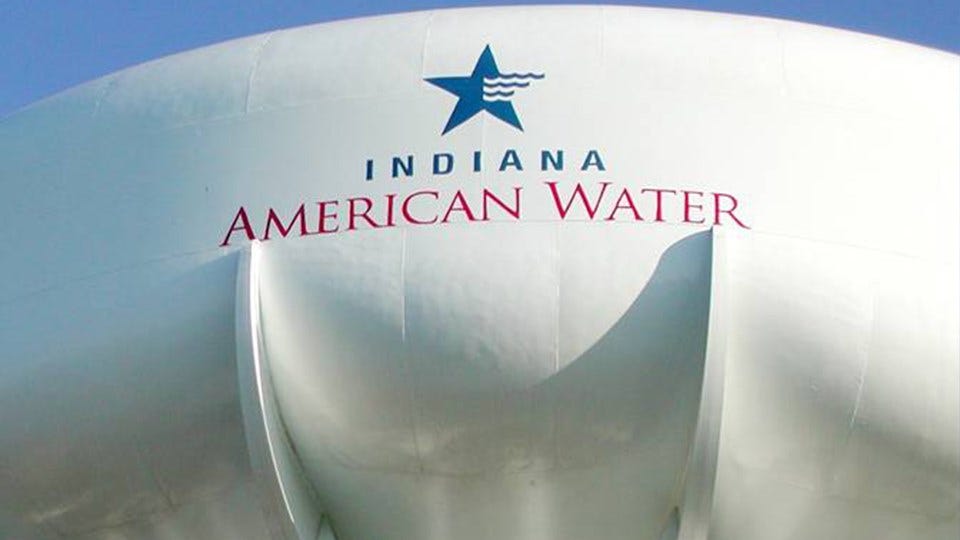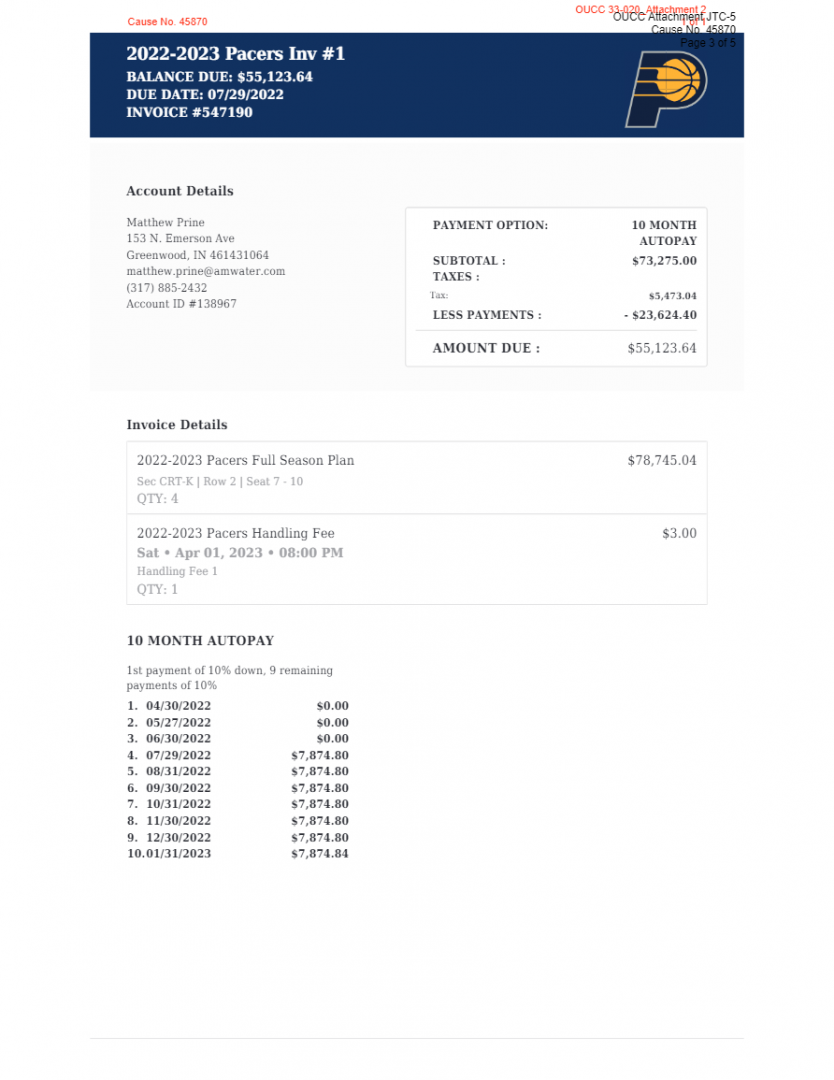Indiana American Water briefly sought to charge customers for Pacers seats
Subscriber Benefit
As a subscriber you can listen to articles at work, in the car, or while you work out. Subscribe Now
Indiana’s largest investor-owned water utility briefly sought to charge its roughly 1.3 million customers statewide for a full season of courtside tickets to Indiana Pacers games — but quietly backtracked in filings Tuesday after consumer advocates contested the expense.
Indiana American Water (IAW) has asked state regulators for a rate increase that would raise its annual revenues by about $87 million. That’s according to the Office of Utility Consumer Councilor (OUCC), the state agency that advocates on behalf of Hoosier utility customers, and which has recommended limiting the increase to just $18.6 million.
Included within the utility’s ask was nearly $60,000 related to the 2022-2023 Pacers tickets — which IAW hoped to recover from its customers.
Utility President Matthew Prine paid almost $80,000 for the plan, according to the invoice, which was for four second-row seats.
The OUCC, however, pushed to get that off the bill.
“Rates should not cover such entertainment for utility employees and their guests,” OUCC Utility Analyst Jason Compton said in testimony filed July 21, while contesting about $21,000 charged to the utility’s employee relations expense account. The utility also charged $38,000 to its community relations expense account.
“These expenditures sourced from attending basketball games are neither in the interest nor benefit of providing safe and reliable water to Indiana consumers and therefore should not be allowed as a recoverable expense,” he continued.
IAW didn’t immediately respond to a request for comment.
“Things like Pacers tickets, you know, that has no place being recovered from ratepayers, and that’s outrageous,” Citizens Action Coalition Program Director Ben Inskeep told the Capital Chronicle. “You know, that’s something that should not be part of why we’re seeing this massive rate increase being proposed by Indiana American.
Story continues below.

The utility mentioned the Pacers expenses just once within the hundreds of pages of rebuttal testimony and attachments it filed Tuesday.
In his testimony, Rates & Regulatory Director Gregory Shimansky said the utility “is accepting” the intervening parties’ position on the removal of the Pacers expenses. The company also conceded three other positions.
Shimansky said the utility wouldn’t resubmit related revenue and rate filings, adding, “We believe these changes to be immaterial and incorporating them would not materially change our position from that filed in the Company’s case-in-chief.
Shimansky’s testimony didn’t, however, address other expenses that the OUCC doesn’t think customers should pay for: industry group fees and an environmental grant program.
The OUCC’s Compton previously recommended that regulators take off the full $189,000 related to the National Association of Water Companies, rather than the 13% the utility said it would take off.
Compton said the expense was associated with lobbying, adding that the association’s activities “substantially benefit shareholders’ interests rather than ratepayers and therefore should not be included in rates.”
He also recommended taking off $8,900 for an environmental grant program that the utility said — in promotional pamphlets — that it or its foundation would finance.
Although these three expenses are a tiny share of a much more expensive rate case, their inclusion set off alarm bells for CAC’s Inskeep.
“Even if the dollar amount isn’t significant, you know, the utility’s internal accounting procedures are supposed to catch things like this,” he said.
“So when you see multiple examples — egregious examples — of spending like this, it really makes you wonder: … are there other, similar items that you just haven’t found evidence of yet?” Inskeep continued. “But then it also makes you wonder: is the utility being forthright about some of its bigger-ticket spending?”
But Inskeep said he did want to credit the utility for a new affordability proposal.
The Universal Affordability Tariff would create multiple tiers of discounts based on household income, with the largest discounts for customers making 0%-50% of the federal poverty level. The utility estimates about 54,000 of its customers would qualify, and that the program would cost $1.3 million the year it is introduced.
“Lower income customers are actually subsidizing higher income customers under the Company’s current rate design,” said Charles Rea, the utility’s senior director of regulatory pricing and affordability, in testimony filed late March.
Rea argued that the discount wasn’t “an undue subsidy,” arguing that, “to the contrary, it is helping to reduce a subsidy that already exists in the other direction.”
The Indiana Capital Chronicle is an independent, not-for-profit news organization that covers state government, policy and elections.
